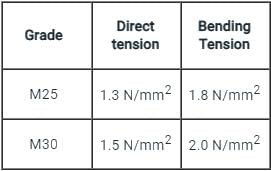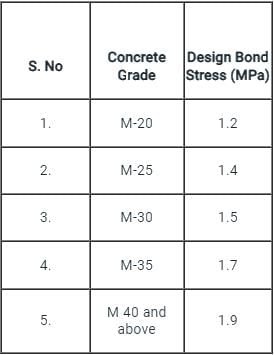Civil Engineering (CE) Exam > Civil Engineering (CE) Tests > RCC & Prestressed Concrete > Test: Theory of RCC- 2 - Civil Engineering (CE) MCQ
Test: Theory of RCC- 2 - Civil Engineering (CE) MCQ
Test Description
5 Questions MCQ Test RCC & Prestressed Concrete - Test: Theory of RCC- 2
Test: Theory of RCC- 2 for Civil Engineering (CE) 2025 is part of RCC & Prestressed Concrete preparation. The Test: Theory of RCC- 2 questions and answers have been
prepared according to the Civil Engineering (CE) exam syllabus.The Test: Theory of RCC- 2 MCQs are made for Civil Engineering (CE) 2025 Exam. Find important
definitions, questions, notes, meanings, examples, exercises, MCQs and online tests for Test: Theory of RCC- 2 below.
Solutions of Test: Theory of RCC- 2 questions in English are available as part of our RCC & Prestressed Concrete for Civil Engineering (CE) & Test: Theory of RCC- 2 solutions in
Hindi for RCC & Prestressed Concrete course. Download more important topics, notes, lectures and mock
test series for Civil Engineering (CE) Exam by signing up for free. Attempt Test: Theory of RCC- 2 | 5 questions in 15 minutes | Mock test for Civil Engineering (CE) preparation | Free important questions MCQ to study RCC & Prestressed Concrete for Civil Engineering (CE) Exam | Download free PDF with solutions
Test: Theory of RCC- 2 - Question 1
Minimum grade of concrete for designing RCC water tank is ______
Detailed Solution for Test: Theory of RCC- 2 - Question 1
Test: Theory of RCC- 2 - Question 2
According to IS 456 : 2000, the minimum and maximum percentage of longitudinal reinforcement in a column (expressed as percentage of gross cross-sectional area of the column), are respectively:
Detailed Solution for Test: Theory of RCC- 2 - Question 2
Detailed Solution for Test: Theory of RCC- 2 - Question 3
Test: Theory of RCC- 2 - Question 4
Lifting of the corners of slab is prevented by providing_______ reinforcement.
Detailed Solution for Test: Theory of RCC- 2 - Question 4
Test: Theory of RCC- 2 - Question 5
Shear and bond stresses of Simply Supproted slabs is usually: _____.
Detailed Solution for Test: Theory of RCC- 2 - Question 5
|
13 videos|42 docs|34 tests
|
Information about Test: Theory of RCC- 2 Page
In this test you can find the Exam questions for Test: Theory of RCC- 2 solved & explained in the simplest way possible.
Besides giving Questions and answers for Test: Theory of RCC- 2, EduRev gives you an ample number of Online tests for practice






















